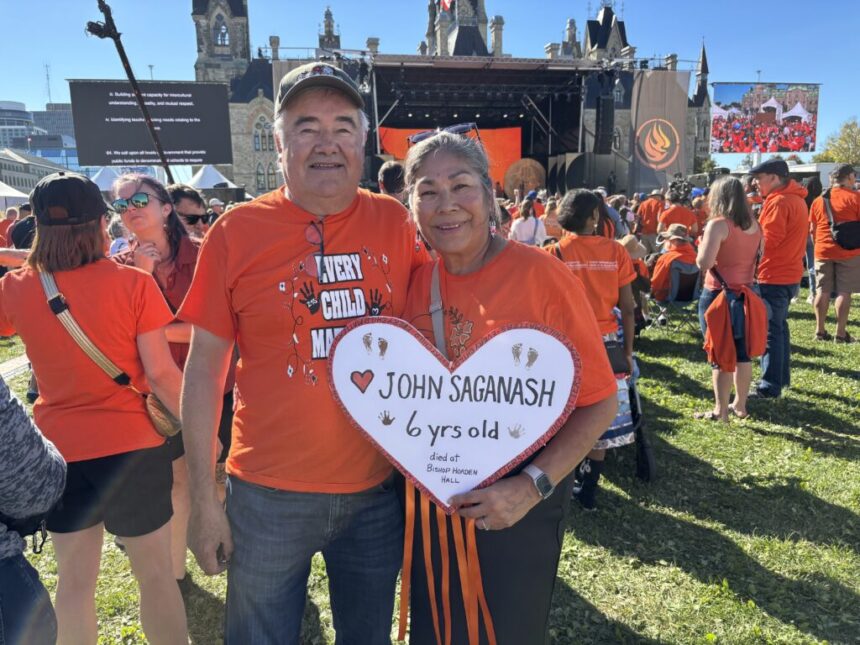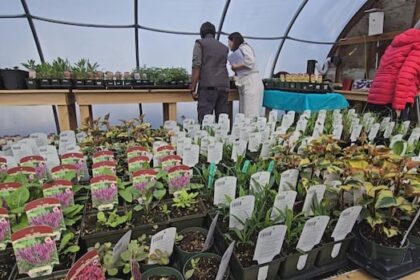Indigenous Services Minister Mandy Gull-Masty was at Montreal’s John Abbott College September 30 to mark the fifth annual National Day for Truth and Reconciliation. Gull-Masty spoke to students and community members about honouring residential school survivors and reflected on what the day means to her as she shared some personal stories. On social media, Gull-Masty stated she was honoured to spend time with students who carry the future of reconciliation in their hands. “Reconciliation is not about remembering the past – it is about empowering the next generation to build something better. I left inspired grateful and full of hope.” Marking the 10th year since the Truth and Reconciliation Committee’s calls to action, Gull-Masty gave an update in Parliament in September on what the federal government is doing to further reconciliation. “This government has made historic decisions to respond. In this very government we saw the appointment of the first Indigenous Minister of Indigenous Services so they can be served by their very own. Also seeing Indigenous voices at the cabinet table creating space for representation and decision making. A Prime Minister who advanced the TRC’s foundational request of inclusion and belonging for September 30 and every day after that,” Gull-Masty stated. In Ottawa, a memorial was held on Parliament Hill, where speeches and presentations were given in English, French, Inuktitut, Ojibwe, Innu-aimun and Plains Cree. During the event, a banner was unfurled listing names of children who never returned home from residential school. The Nation met with Jeannie and Bill Namagoose at the event. Jeannie has been doing her part in educating youth about the legacy of residential schools. For the past three years she has been visiting Ottawa schools telling the story of John Saganash, a six-year-old boy who perished at Bishop Horden Hall in Moose Factory in 1954. Jeannie said her presentation consists of two parts: first, recounting Saganash’s tragic story; and second, highlighting some Eeyou-Eenou cultural milestones he was denied. Jeannie said she noticed a higher participation in the last five years after the Ottawa District School Board designated Orange Shirt Day an official day of observance. “Students and staff are very receptive and respectful,” she said. However, many students have a strong reaction. “Some are frightened by the thought that such schools even existed. Some are emotional when they hear about John’s experiences, I have seen a few tears. Some are incredulous at the injustice and cruelty of what was perpetrated on Indigenous children.” Then she added, “Teachers often tell me that it is the first time hearing about residential schools and often ask why they were not taught about this in school.” Jeannie said more schools are approaching her to express interest in understanding the history of residential schools and Canada’s dark past. On the same day, a ceremony in Mistissini unveiled a monument honouring local residential school survivors and the children who never returned home. Its inscription reads: From the 1930s through the 1970s, hundreds of Eenou children from Mistissini Eenou Nation were forcibly taken from their families and sent to residential schools in Quebec and Ontario. This era marks a dark chapter in Canadian history. Today, many survivors are now Elders or have passed away. Their legacy and efforts to secure our rights testify to the strength and resilience of the Eenou Nation of Mistissini. The Cree Nation of Mistissini honours the lives and memories of these survivors and children who never returned home, acknowledging the pain and suffering endured. May this monument remind future generations of our history, resilience and the importance of healing and reclaiming our Cree identity.
Wednesday, 17 Dec 2025
Canada – The Illusion
Search
Have an existing account?
Sign In
© 2022 Foxiz News Network. Ruby Design Company. All Rights Reserved.
You May also Like
- More News:
- history
- Standing Bear Network
- John Gonzalez
- ᐊᔭᐦᑊ ayahp — It happened
- Creation
- Beneath the Water
- Olympic gold medal
- Jim Thorpe
- type O blood
- the bringer of life
- Raven
- Wás’agi
- NoiseCat
- 'Sugarcane'
- The rivers still sing
- ᑲᓂᐸᐏᐟ ᒪᐢᑿ
- ᐅᑳᐤ okâw — We remember
- ᐊᓂᓈᐯᐃᐧᐣ aninâpêwin — Truth
- This is what it means to be human.
- Nokoma











